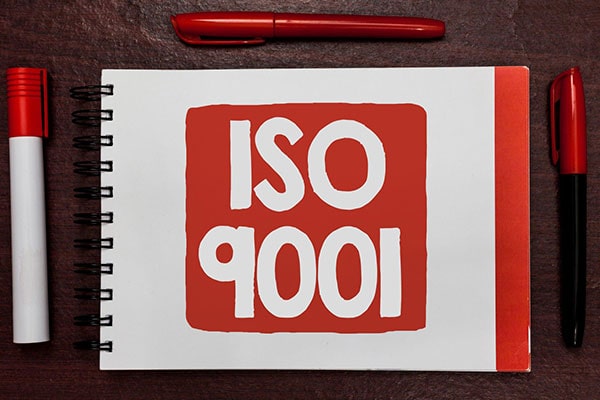To solve their scepticism, customers can simply browse their favourite brands' websites to learn more about how they operate.
What is the real purpose of ISO 9001 in a world where technology is prevalent and innovation is everywhere? To answer this question, you must read the following article. This article will briefly describe why ISO 9001 was created and why it is needed today.
What is ISO?
The International Organization for Standardization (ISO) is the world's biggest publisher of voluntary international standards.
Their standards aim to offer simple solutions and best practices for almost all types of businesses and technologies, helping organisations improve their performance while protecting their consumers.
The majority of their standards were created through global consensus, aiming to break down any barriers to international trade. Some of the most popular ISO standards are ISO 9001, which focuses on quality, ISO 14001, which focuses on environmental performance management and ISO 45001, which focuses on occupational health and safety.
What is ISO 9001:2015?
ISO 9001 is the world's most recognised quality management standard that aims to help organisations meet the needs of customers and other stakeholders more efficiently. They do so by helping organisations build a framework to ensure consistent quality utilising seven quality management principles, including a strong customer focus, drive for continual improvement, involvement of top management, better relationship management, engagement of employees, evidence-based thinking and process approach.
Additionally, the standard helps organisations implement quality assurance through a Quality Management System (QMS). You can learn more about QMS in What is quality management system Page.

History of ISO 9001:2015
To understand what problem ISO 9001 solves today, it is necessary to look at its history. The roots of the standard can be traced back to World War II. During that time, the global climate was erosive, and there was increasing pressure for standardisation, especially for factories developing explosive devices.
The very logical requirement backed this pressure for better safety and better quality. Thus, the BS 5750 series of standards was born, helping businesses enhance the quality of their devices by complying with strict production procedures. However, the rigid nature of these instructions made them inapplicable to other organisations, thereby giving birth to ISO 9001.
The ISO 9001 standard was developed to address quality issues for all organisations by offering a universal framework. The standard has undergone multiple revisions in 1994, 2000, 2008 and 2015.
The repeated revisions have made the standard extremely relevant, capable and sustainable. The quality management principles were updated, and the core terms were expanded to assimilate easy implementation. Business owners can now implement ISO 9001 even if they have other management systems.
Why do we need ISO 9001?
Before we dive into the actual benefits of the standard that make it an absolute necessity for all business owners, let us discuss the problem that the standard attempts to solve. The lack of standardisation across different industries creates inconsistencies in the quality of products or services.
This statement means that two companies in the same industry can utilise different sets of procedures to produce the same product with differing qualities.
Additionally, the same company can produce irregular quality at two separate time periods if there is no standardisation or consistency. Now, this has become highly unsafe for consumers.
Additionally, it is unfair to consumers who are expected to pay a certain amount for unreliable products or of ambiguous quality. This is where the ISO 9001 standard comes into play. Irrespective of the organisation's size, implementing ISO 9001 is an objective guarantee that the quality of products or services will be maintained as industry-specific best practices are incorporated into the operations.
Hence, we need ISO 9001, as it protects the expectations of customers and levels the playing field for organisations. You can get more information about the certification on the iso 9001 certification australia page.
Benefits of ISO 9001
Essentially, an ISO 9001 certification provides objective proof to the outside world, clients, partners and your staff that customer satisfaction is at the core of your business. It brings you key benefits such as:
� Increased revenue: If you can appropriately leverage the reputation of ISO 9001, you can win more tenders and contracts and retain more customers.
� Improvement of your credibility: When larger companies are looking for new suppliers, they often shortlist based on ISO 9001 certification.
� Improved customer satisfaction: The standard helps you understand your customers' needs and reduce errors, thereby increasing customers' confidence in your ability to produce high-quality goods or services.
� Higher operating efficiency: By focusing on quality and following industry best practices, you can reduce costs and improve operating efficiency.
� Improved decision-making: By identifying issues before they escalate to problems, you can quickly mitigate them, saving your organisation both time and resources.

Conclusion
ISO 9001 is objective proof that customer satisfaction is the core of your business. The standardisation it provides helps to protect the rights of the customers as well as level the playing field for organisations.
If you want to get the ISO 9001 certificate, just visit the ISO 9001 certification consultants website. We help you get your license in Australia in the shortest possible time.











